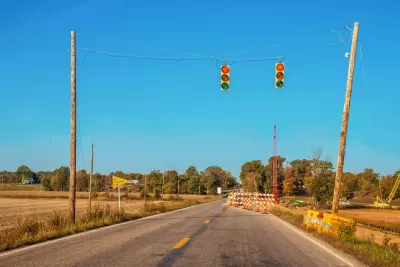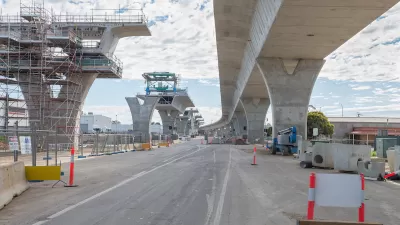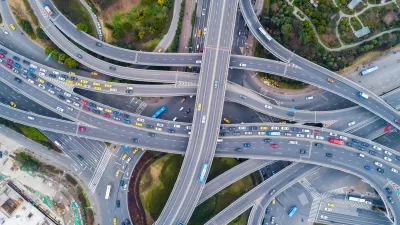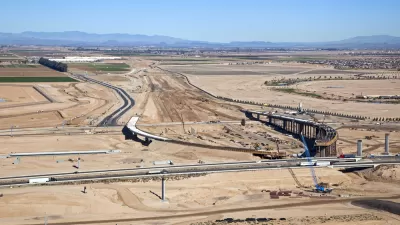This is a largely unintended consequence of states with lower populations and resources focusing on repairing existing roads and infrastructure rather than expanding and building new roads.

There’s a difference in how urban and rural areas invest in their transportation infrastructure — and it’s not what you might think.
According to a report from Transportation for America, “Rural, conservative states seem to be pushing through projects that will yield less carbon emissions in the long term compared to their more progressive urban counterparts.”
As Benton Graham explains in Bloomberg CityLab, this is due to the fact that rural areas are by and large investing in maintenance and repairs of existing roads and infrastructure rather than expansion projects. “Based on projects that have been funded through the bipartisan infrastructure law so far, the report concludes that states like Montana, North Dakota and Wyoming will see a net reduction in emissions compared to the pre-IIJA baseline because they have invested big chunks of their infrastructure money toward simply fixing their existing roads with resurfacing projects.”
Even in states where lowering carbon emissions is not a priority, low populations mean there’s little demand to expand roadways. Meanwhile, some highly urbanized states continue to invest in highway expansion in lieu of other solutions to congestion. “While Florida and Texas fare the worst in future emissions rankings, California is also in the bottom six, and its infrastructure reflects that.”
FULL STORY: The Urban-Rural Divide Over Highway Expansion and Emissions

Planetizen Federal Action Tracker
A weekly monitor of how Trump’s orders and actions are impacting planners and planning in America.

Restaurant Patios Were a Pandemic Win — Why Were They so Hard to Keep?
Social distancing requirements and changes in travel patterns prompted cities to pilot new uses for street and sidewalk space. Then it got complicated.

Map: Where Senate Republicans Want to Sell Your Public Lands
For public land advocates, the Senate Republicans’ proposal to sell millions of acres of public land in the West is “the biggest fight of their careers.”

Maui's Vacation Rental Debate Turns Ugly
Verbal attacks, misinformation campaigns and fistfights plague a high-stakes debate to convert thousands of vacation rentals into long-term housing.

San Francisco Suspends Traffic Calming Amidst Record Deaths
Citing “a challenging fiscal landscape,” the city will cease the program on the heels of 42 traffic deaths, including 24 pedestrians.

California Homeless Arrests, Citations Spike After Ruling
An investigation reveals that anti-homeless actions increased up to 500% after Grants Pass v. Johnson — even in cities claiming no policy change.
Urban Design for Planners 1: Software Tools
This six-course series explores essential urban design concepts using open source software and equips planners with the tools they need to participate fully in the urban design process.
Planning for Universal Design
Learn the tools for implementing Universal Design in planning regulations.
Heyer Gruel & Associates PA
JM Goldson LLC
Custer County Colorado
City of Camden Redevelopment Agency
City of Astoria
Transportation Research & Education Center (TREC) at Portland State University
Camden Redevelopment Agency
City of Claremont
Municipality of Princeton (NJ)





























